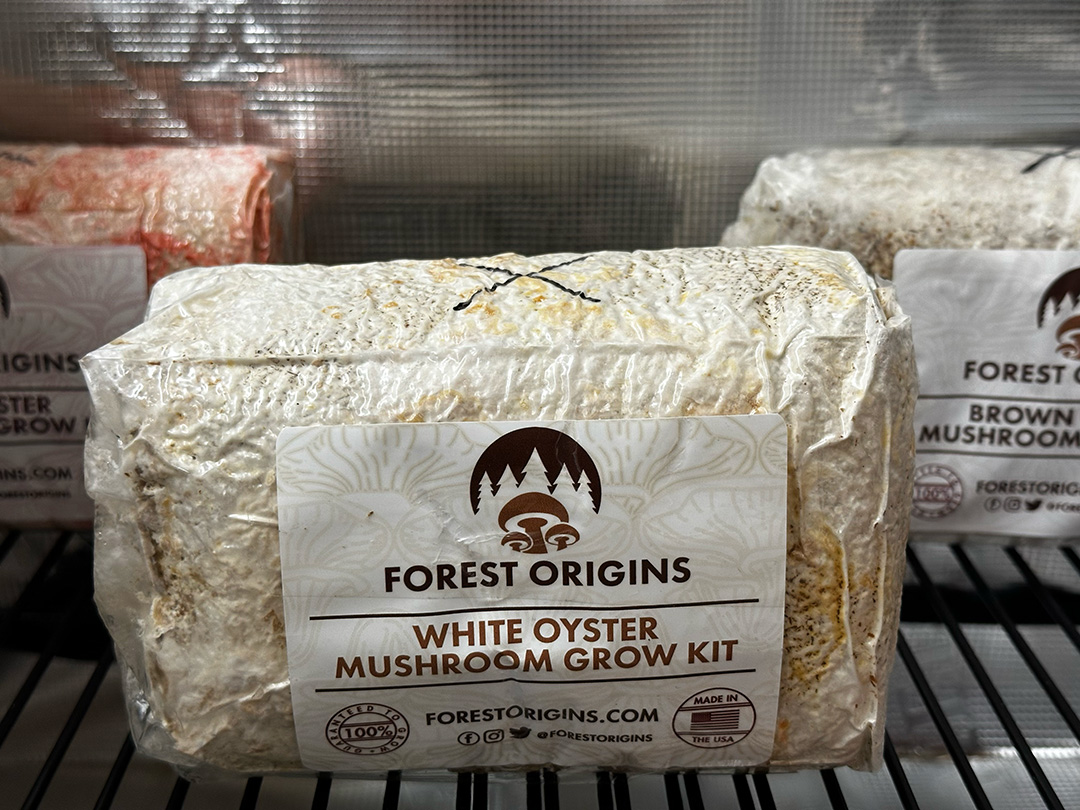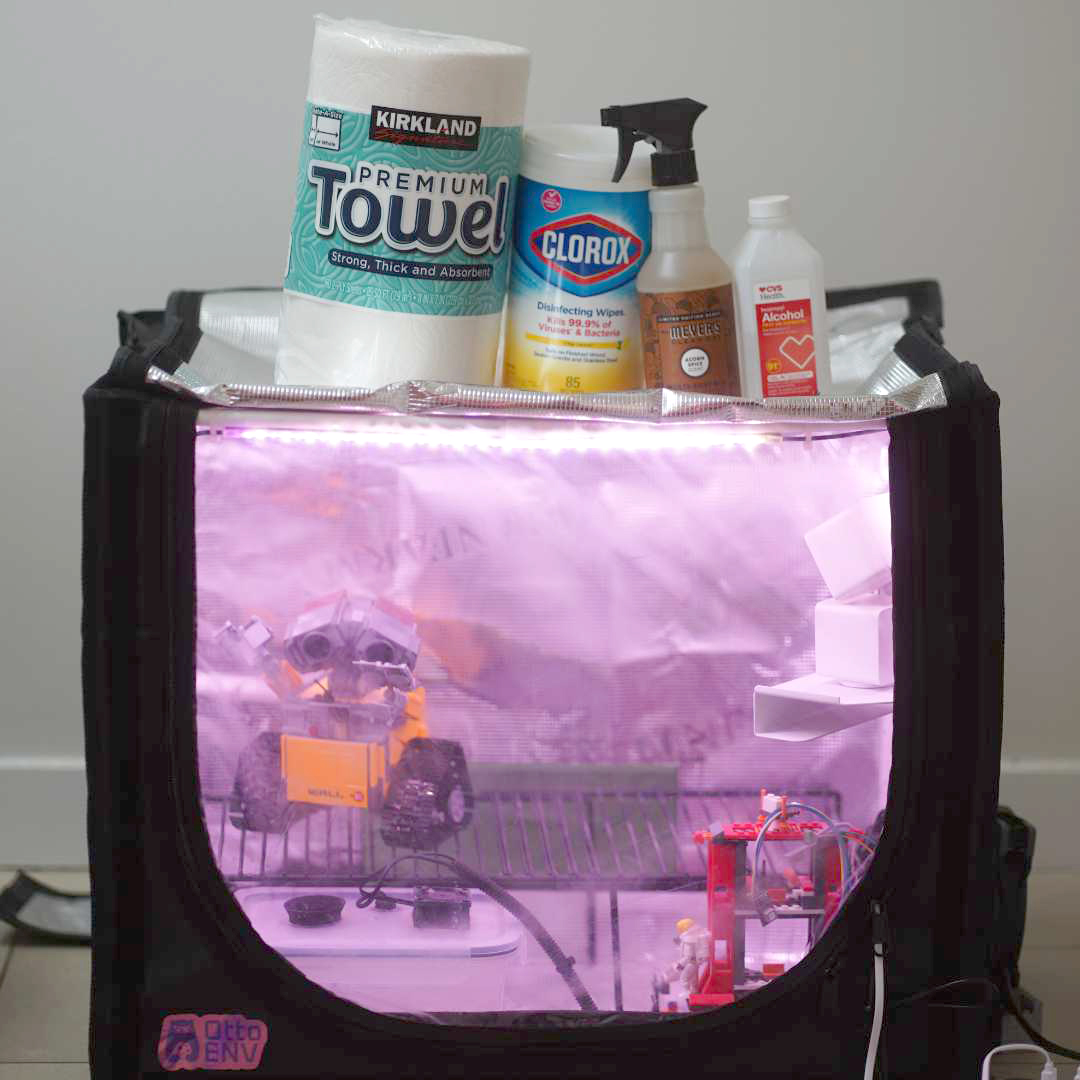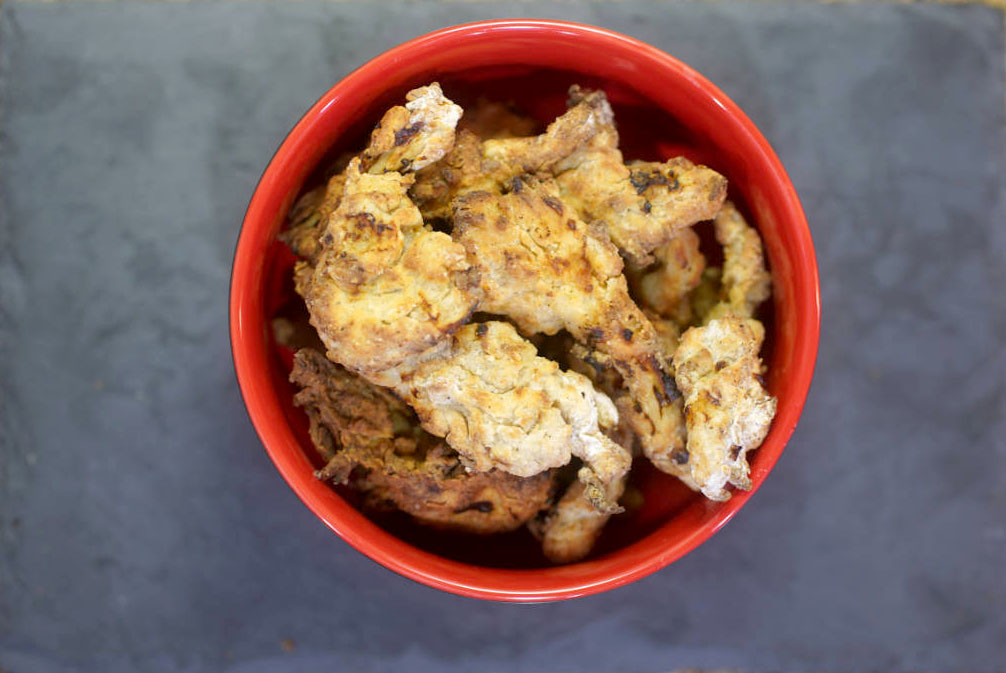Introduction
Growing gourmet mushrooms at home has become an increasingly popular endeavor for enthusiasts seeking to explore the vast world of mushroom cultivation. Luckily, with the rise in popularity and interest in growing mushrooms, there’s been in increase in availability of “all-in-one grow kits” from online retailers and local suppliers alike (you may have seen some “Back-to-the-Roots” kits sitting on your local Target shelves, for instance). Utilizing all-in-one grow kits can help beginner enthusiasts grow a wide variety of gourmet mushrooms with minimal effort (and basically no effort if you combine it with the OttoENV system which takes care of all the details such as humidity and fresh air exchange). In today’s post we’ll give you a quick primer on some easy to grow mushroom varieties that are available via an all-in-one grow kit.
Pink Oyster Mushrooms
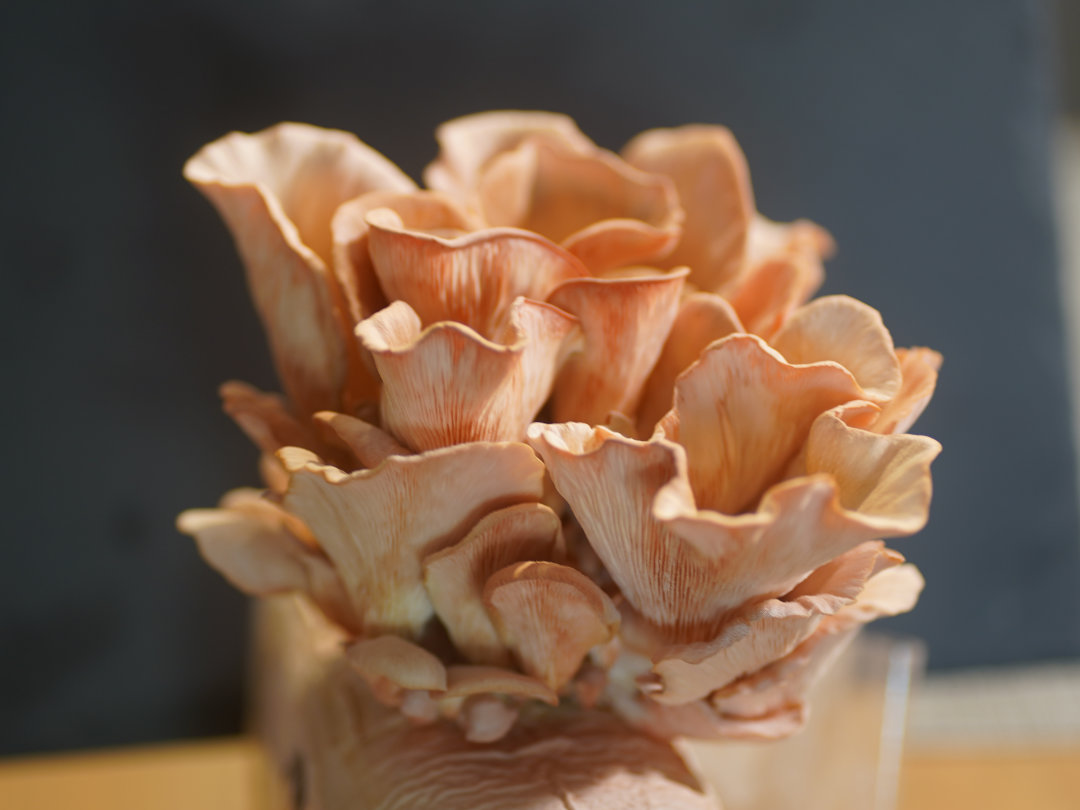 A bouquet of freshly harvested Pink Oyster mushroom
A bouquet of freshly harvested Pink Oyster mushroom
These vibrant mushrooms are not only a feast for the eyes but also pack a punch in terms of flavor. They have a slightly woody taste that becomes more pronounced when cooked. Pink oyster mushrooms are perfect for those who love to add a pop of color to their dishes and Instagram feeds (see our Pink Oyster Bacon post if you’re looking for something to try out). Plus, they grow so fast you can practically watch them bloom overnight. This variety thrives in temperatures ranging from 70°F to 82°F, preferring high humidity levels (~80%).
Brown Oyster Mushrooms
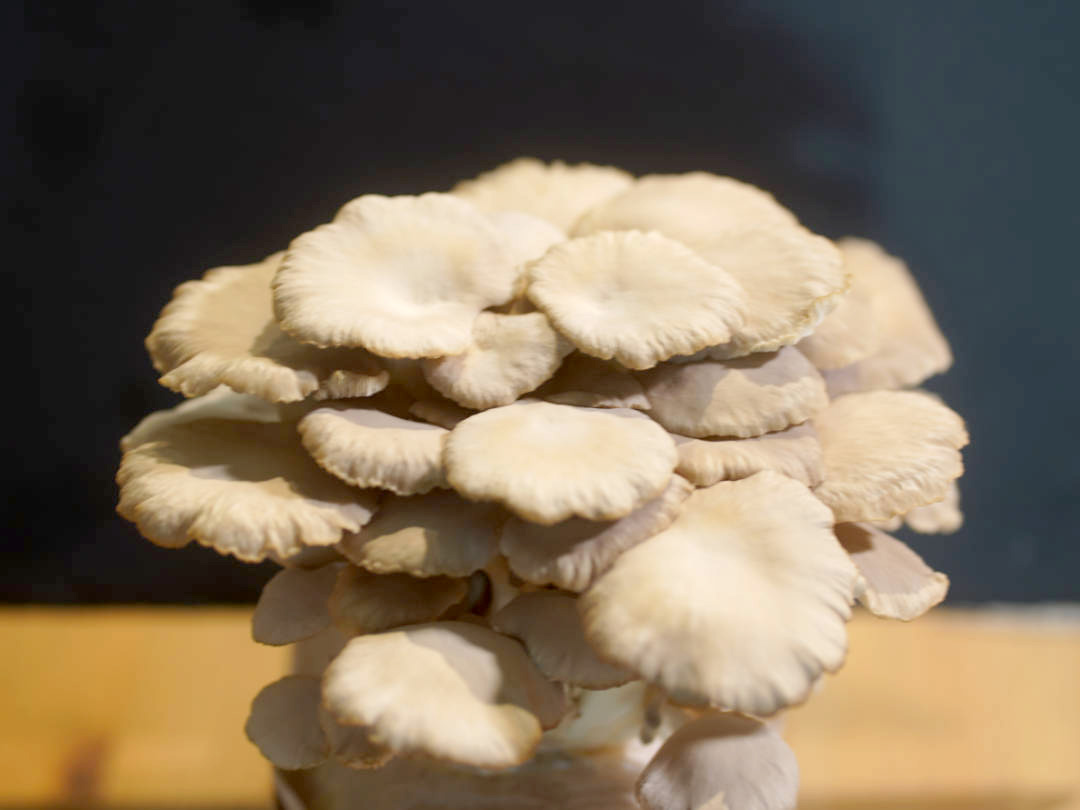 Brown Oyster Mushroom
Brown Oyster Mushroom
This variety of oyster mushroom is known for its robust umami flavor, making it a must have in a variety of gourmet dishes. It can thrive in a wide temperature range, but shows optimal growth between 59°F to 75°F. The hearty nature of this mushroom variety makes it an excellent choice for those new to mushroom cultivation!
Pearl Oyster Mushrooms
Pearl oyster mushrooms are distinguished by their subtle flavor with slight odor similar to anise that combines both sweet and savory notes. When cooked, they offer a balance that can appeal to many palates. They prefer cooler growing conditions, thriving best between 54°F to 64°F. This species is noted for its rapid growth cycle.
Blue Oyster Mushrooms
With their unique coloration and slightly nutty taste, blue oyster mushrooms are both a visual and culinary delight. Blue Oyster mushrooms can be used in a variety of dishes, including stir-fries, soups, stews, risottos, and pasta dishes. They pair well with garlic, ginger, soy sauce, and other Asian flavors. This variety is capable of withstanding chilly conditions, even down to 55°F, but have optimal growth in the temperature range of 60°F to 82°F. These mushrooms are known for their prolific yields under appropriate conditions (such as in an OttoENV-controlled tent).
Lion’s Mane Mushrooms
 See the resemblance?
See the resemblance?
Notable for its potential cognitive benefits and unique texture reminiscent of seafood (see our post on Lion’s Mane Crab Cakes if you’re looking for something to try out). Lion’s Mane requires a specific environment for growth, with temperatures maintained between 64°F to 78°F. Relatively high humidity is crucial for the development of its distinctive spiny appearance.
Shiitake Mushrooms
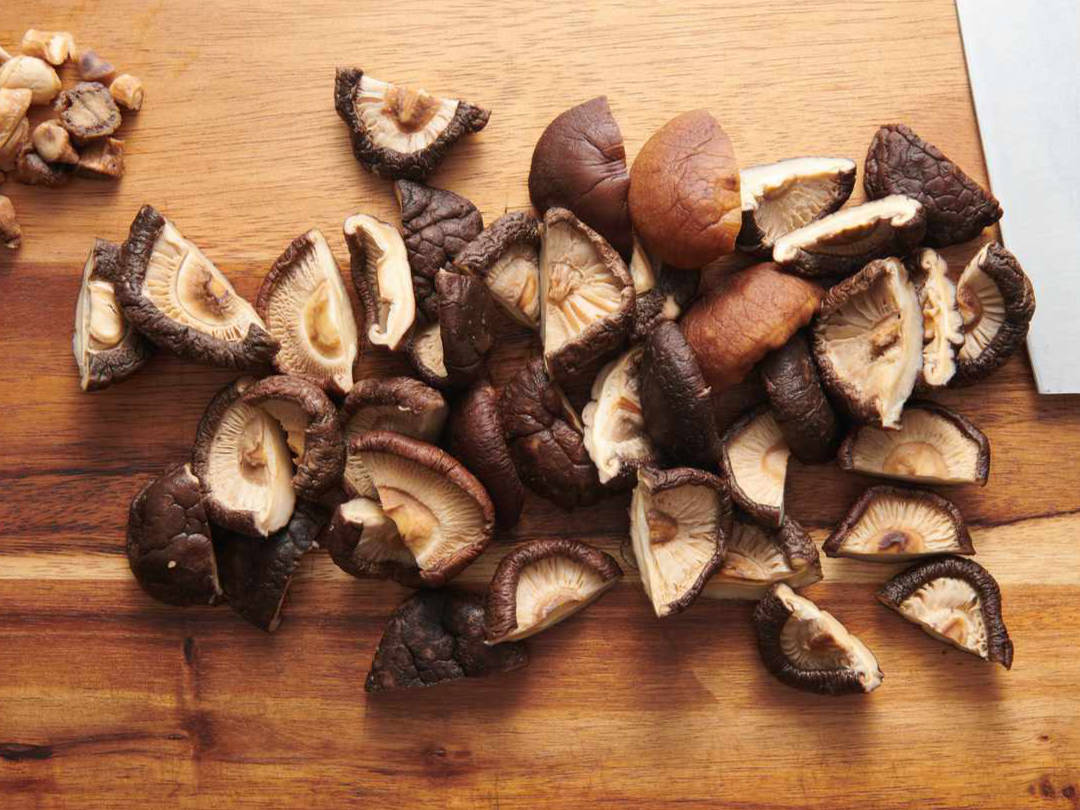 Shiitake Mushrooms
Shiitake Mushrooms
Shiitake mushrooms have a rich, savory, and earthy flavor. This unique taste complements many dishes, enhancing the overall flavor profile. The meaty texture of shiitake mushrooms provides a satisfying mouthfeel, making them a popular choice for vegetarian and vegan dishes as a meat substitute. They grow best at temperatures ranging from 65°F to 80°F and have a preference for relatively lower humidity levels (around 50%). This variety requires patience but rewards cultivators with its rich flavor.
Turkey Tail Mushrooms
Known for its medicinal properties, particularly in immune system support, Turkey Tail mushrooms can be consumed in various forms, including teas, capsules, extracts, and powders. They can also be used in cooking, especially in soups, stews, and broths. The recommended dosage and duration of use depend on the form and the intended purpose of use. The optimal fruiting temperature for turkey tail mushrooms is between 60°F to 75°F. However, they can also fruit at temperatures as low as 40°F and as high as 90°F, although the yield may be reduced.
Pioppino Mushrooms
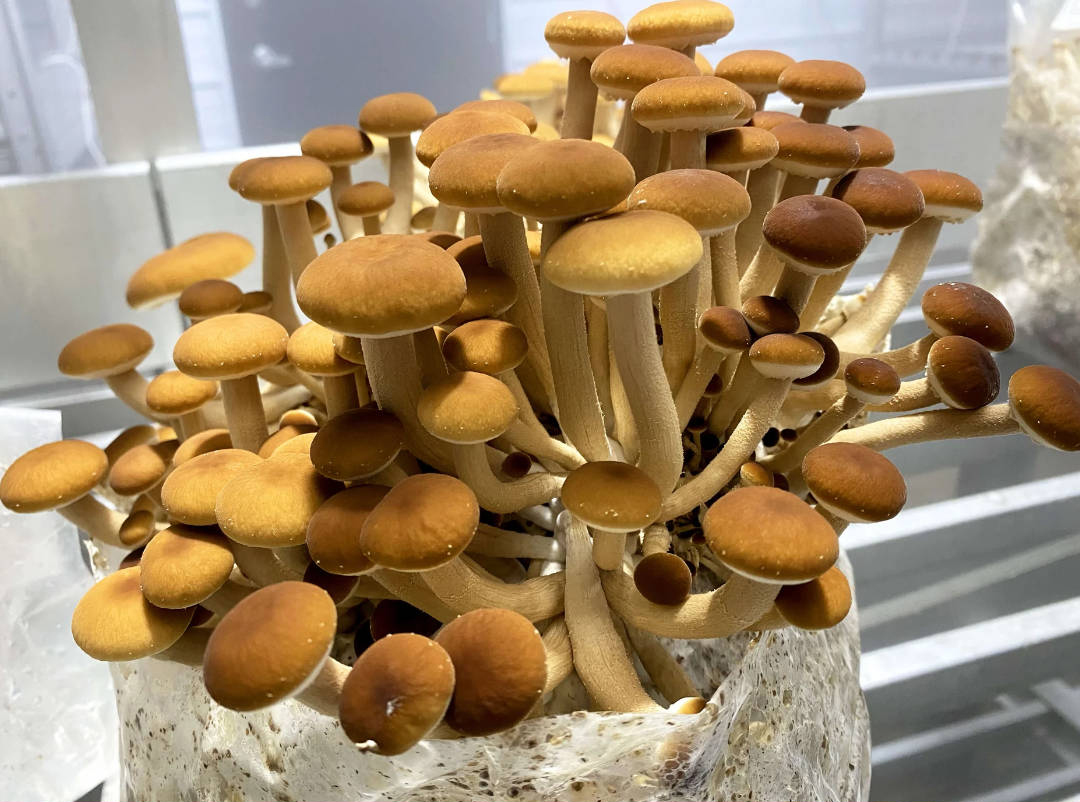 Pioppino Mushrooms
Pioppino Mushrooms
Valued for its nutty flavor and firm texture, Pioppino mushrooms are versatile and can be cooked in a variety of ways, including sautéing, roasting, grilling, and stir-frying. They pair well with a range of ingredients, including meats, seafood, vegetables, and pasta. When cooking, it’s best to avoid overcooking, as they can become tough and rubbery. Pioppino mushrooms flourish in temperatures between 64°F to 78°F. They are particularly suited for wood-based substrates, offering a unique flavor profile ideal for culinary experimentation.
Chestnut Mushrooms
Chestnut mushrooms are favored for their crunchy texture and rich, nutty flavor (similar to Portobellos) and are often used in savory dishes such as soups, stews, sauces, and stir-fries. They can also be eaten raw in salads or as a garnish. Chestnut mushrooms require temperatures between 65°F to 79°F for optimal growth, along with balanced moisture levels (keep humidity on the drier side) to ensure a fruitful yield.
Maitake Mushrooms
Also known as Hen of the Woods, Maitake mushrooms are celebrated for their health benefits and complex flavor. Maitake mushrooms can be cooked in a variety of ways, including sautéing, roasting, or grilling. They can also be added to soups, stews, and stir-fries. They grow best in temperatures ranging from 50°F to 68°F and prefer a high humidity environment (~90%).
Cultivation Recs
For successful cultivation, maintaining the correct temperature and humidity levels is paramount. Each variety has specific requirements, but generally, a consistent temperature within the aforementioned ranges and a high humidity environment are crucial. Indirect light can also support the optimal growth cycle without exposing mushrooms to direct sunlight, which can be detrimental.
Conclusion
The cultivation of gourmet mushrooms at home has been made easier by the proliferation of all-in-one grow kits that are readily available across a variety of channels. If you’re considering diving into the world of mycology and sustainable cuisine, you can easily do so by purchasing one of these kits (and if you want to make your life 10x easier, check out our OttoENV system to make growing mushrooms even simpler).
By sticking to species-specific cultivation parameters and ensuring appropriate environmental conditions (e.g., humidity, fresh air, light, and temperature), you can enjoy a diverse array of gourmet mushrooms for use in a wide variety of culinary applications!

